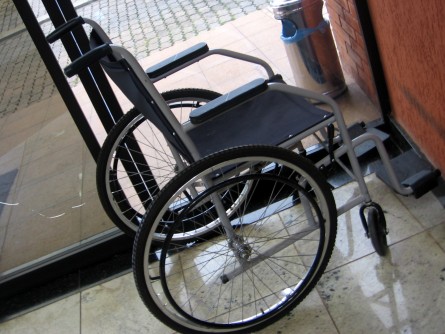The evidence of Mohammed’s incompetence—found in more than five thousand pages of transcripts from her hearing—seems as unambiguous as the city’s lawyer promised in his opening statement: “These children were abused in stealth. . . . It was chronic . . . a failure to complete report cards. . . . Respondent failed to correct student work, failed to follow the mandated curriculum . . . failed to manage her class.” The independent observer’s final report supported this assessment, ticking off ten bullet points describing Mohammed’s unsatisfactory performance. (Mohammed’s lawyer argues that she began to be rated unsatisfactory only after she became active with the union.)
This was the thirtieth day of a hearing that started last December. Under the union contract, hearings on each case are held five days a month during the school year and two days a month during the summer. Mohammed’s case is likely to take between forty and forty-five hearing days—eight times as long as the average criminal trial in the United States.
For people who know that the teachers unions are standing in the way of impoverished kids getting a decent education, Brill's piece was a reason to stand up and cheer. And for those who, like many readers of the New Yorker, did not, I suspect, realize the extent of the problem, the piece was eye-opening.
All of which brings me to Brill's piece on the front of the Review section in Saturday's Wall Street Journal. It concludes with a call for ... compromise with the unions. He even dreams of Mike Bloomberg appointing Randi Weingarten as chancellor of the New York City public schools. (His dream, most parents' nightmare.)
Brill's premise is reasonable enough. It is going to be hard to scale up our most successful models for education reform. The best charter schools like KIPP and the best teacher training programs like Teach for America require very smart people to work very hard for very long hours to make a difference. We don't have an unlimited number of such people and they may not be willing to sacrifice their personal lives forever in order to do these jobs.
This is not a new observation--I remember visiting a successful charter school in Boston a dozen years ago and having the principal say the same thing to me--but it's an important one. I actually don't worry about a high level of turnover in these kinds of positions. I had plenty of friends who graduated from college and went to work at consulting firms or investment banks for 90 hours a week. They had no personal lives for a few years and then left for other jobs or to go back to school. Executives at McKinsey and Morgan Stanley don't say "Oh no, this is unsustainable because these young people only stay in these roles for a few years." Instead they say, "Great! You're willing to throw your heart and soul (or at least your brain) into this job for three years! We'll take every minute of it!"
Brill, though, looks at the whole public education landscape and says this isn't feasible.
There are about 50 million students in America's 95,000 K–12 public schools. If just half of them need the kind of intensive care offered by the best charter schools, that would require overhauling classrooms for more than 25 times as many children as are now being served by the country's charter schools.
That cannot be done charter by charter; it takes the infrastructure of the public school system. And whether those schools are charter schools or traditional public schools, that means finding, training and motivating 1.5 million teachers and some 47,500 principals.
He's right. It is not possible to reform all of public education in America using charter schools.
But I think Brill is setting his sights too high. President Obama noted last year that "Just 2,000 high schools in cities like Detroit, Los Angeles, and Philadelphia produce over 50% of America’s dropouts." If Scarsdale and Grosse Pointe and Beverly Hills parents want charter schools, well, more power to them, but I think we could start by tackling the problem created by those 2,000 schools, in poor inner-city or rural areas. And yes, I think that could be done without the cooperation of America's intransigent teachers' unions. We certainly can't afford to wait for them.





